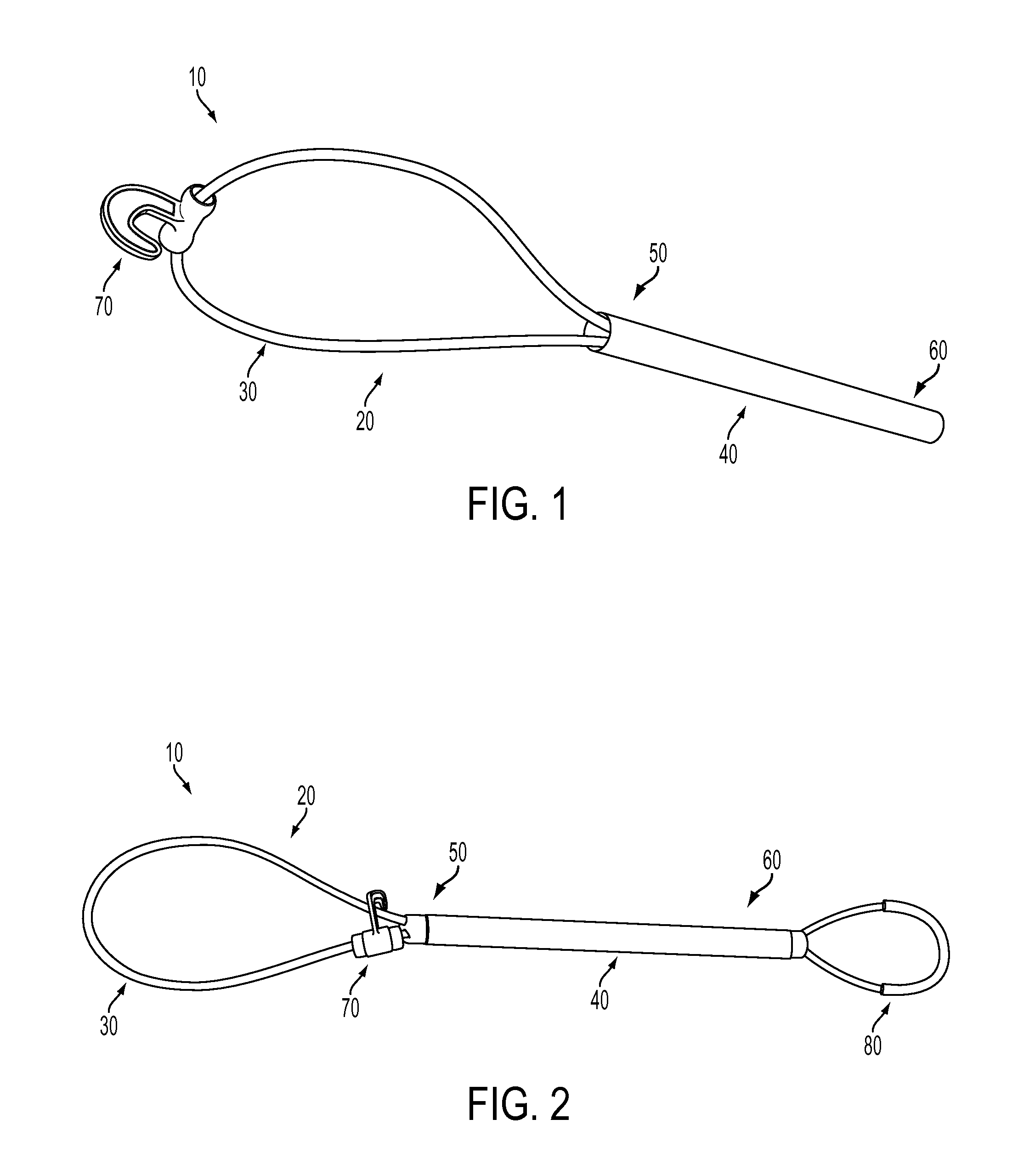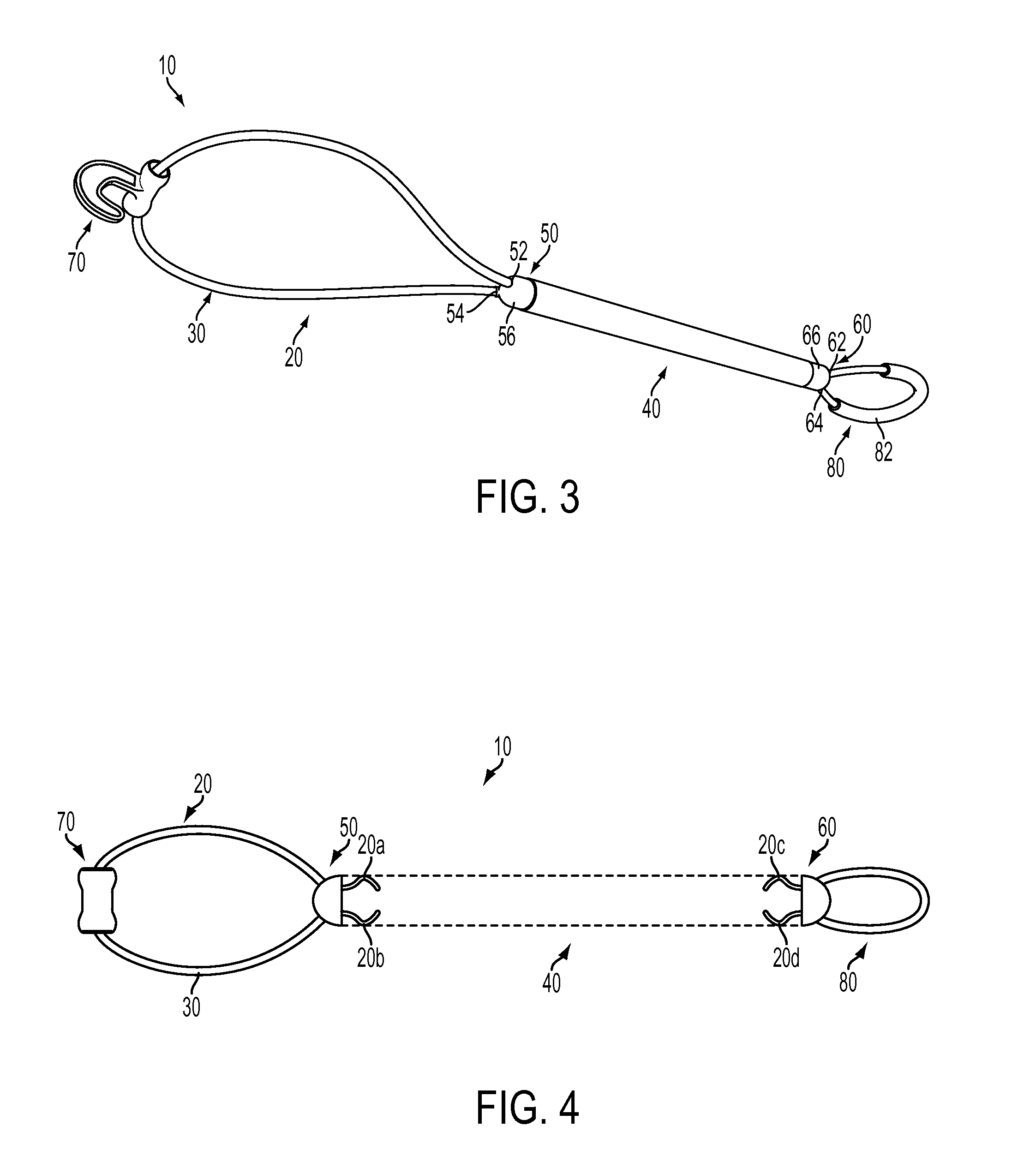Docking aid apparatus with utility implement
a technology of mooring apparatus and mooring rod, which is applied in the direction of boat hooks, waterborne vessels, vessel construction, etc., can solve the problems of inefficient hit-and-miss methods, inability to successfully loop the piling from the boat, and the difference in the physical dimensions of the dock, so as to reduce the wear and tear at the weak points and be more durable
- Summary
- Abstract
- Description
- Claims
- Application Information
AI Technical Summary
Benefits of technology
Problems solved by technology
Method used
Image
Examples
Embodiment Construction
[0029]This apparatus aids in docking a boat without assistance from the shore, and without having to disembark to manually aid in the docking While the invention will be described in connection with certain embodiments, there is no intent to limit the invention to these embodiments. On the contrary, the intent is to cover all alternatives, modifications and equivalents as included within the spirit and scope of the invention. Various changes may be made to the function and arrangement of the elements described herein, without changing the scope of the invention being disclosed. It should be noted that the following description serves to teach at least one instance of how the various elements may be arranged to achieve the stated goals of this invention.
[0030]With reference to FIG. 1, a docking aid apparatus 10 may be used to acquire connection to a docking pole or another watercraft. The apparatus may also be used to grab a distant docking pole or another watercraft to pull closer t...
PUM
 Login to View More
Login to View More Abstract
Description
Claims
Application Information
 Login to View More
Login to View More - R&D
- Intellectual Property
- Life Sciences
- Materials
- Tech Scout
- Unparalleled Data Quality
- Higher Quality Content
- 60% Fewer Hallucinations
Browse by: Latest US Patents, China's latest patents, Technical Efficacy Thesaurus, Application Domain, Technology Topic, Popular Technical Reports.
© 2025 PatSnap. All rights reserved.Legal|Privacy policy|Modern Slavery Act Transparency Statement|Sitemap|About US| Contact US: help@patsnap.com



